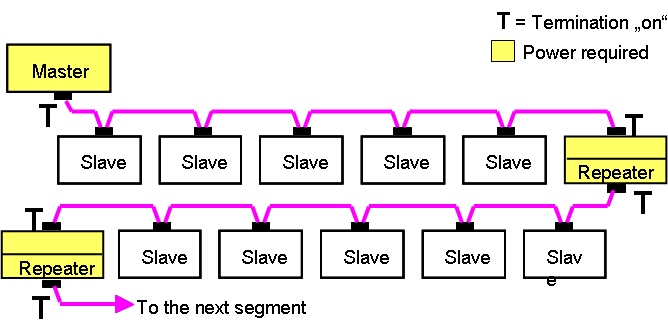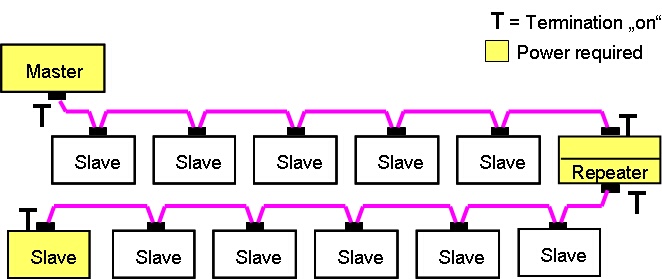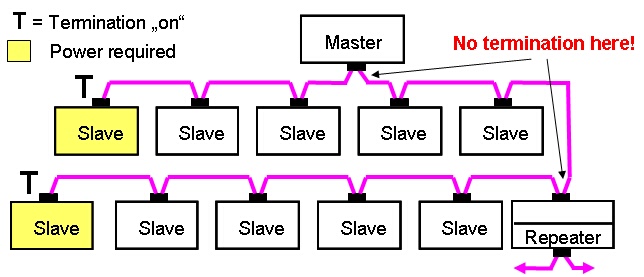
PROFIBUS Manual
When working in a single-master system, ideally the master should positioned at one end of the segment and so have the bus termination switched on. If the master loses its supply, the network will become non-operational and the bus termination, which no longer receives any power, will have no effect. If there is a repeater at the other end forwarding the line to the next segment, it will be possible to plug in or remove every station without affecting network function. When doing this it is important for the repeater to have a continuous supply, because it has the bus terminations.

Preferred cabling of a single-master system
If no repeater is used at the end of a segment (e.g. in the last segment) the bus termination in the connector of the last device must be switched on. This means that the supply to the last device must be permanently operational to maintain power to the bus termination. If you have to replace the last device, the bus termination will not be powered and the bus may become unstable.

Master and last slave with an active termination
If system requirements demand that the master (i.e. the controller) should be in the middle of the segment), bus termination must be switched on at both ends of the segment. This means that both devices at either end of the segment must have a permanent supply to allow the segment to function properly. As soon as one or other end device has to be replaced, the bus may become unstable during this operation.

Master and repeater in the middle of a segment
An alternative is to use 'active' bus terminations. An active bus termination is provided directly with a power supply and must always be supplied with power. The advantage of this construction is that all other slaves on the segment can be removed and replaced, without affecting the network. As a rule, an active bus termination will have connecting terminals but no D-type connector, to prevent any second bus termination from being switched on accidentally.

Active bus terminations
